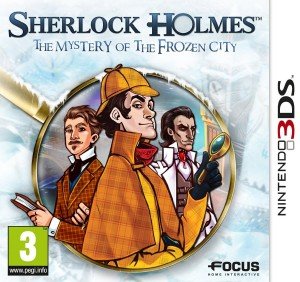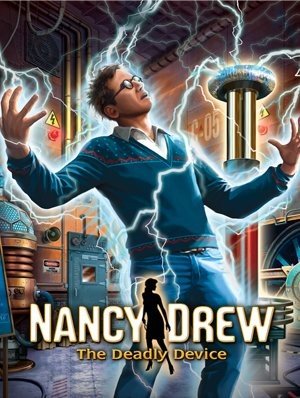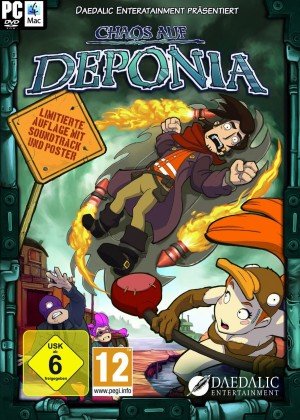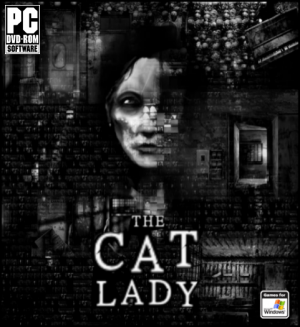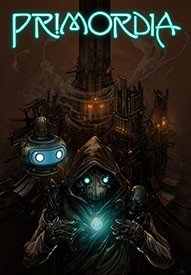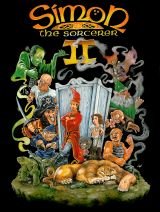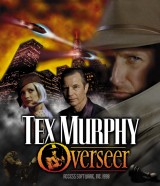Review for Twilight Phenomena: The Lodgers of House 13

You’re in need of a place to stay. An ad for a reasonably priced room in a gorgeous mansion on the ominously named 13 Darwin Street catches your eye – you just need to sign on the dotted line. What could possibly go wrong? In ERS Game Studios’ Twilight Phenomena: The Lodgers of House 13, you’re in for a macabre lesson in doing due diligence when signing any leases. If that sounds dull, the story you’re in for is anything but, even if it doesn't make much sense. Gorgeous artwork and loads of exploration surround a variety of easy puzzles and an insanely wacky plot involving hologram technology, maniacal monkeys, decapitated specimens, and really, really cute hedgehogs.
Following in the footsteps of other recent ERS titles like Dark Alleys: Penumbra Motel and Gothic Fiction: Dark Saga, this lite casual game eschews any hidden object scenes as it takes you through the story of the mysterious mansion. Upon signing the contract, it's naturally time to explore, right? Well, you’re in for a doozy of a house inspection as you find that the previous tenant’s clothes and belongings are still scattered about your room (uh oh) and then... what’s that? Is that...? Could it be...? Why yes, that is a crazed ape swinging past your window kidnapping a formally dressed woman (double uh oh, with an extra helping of huh?).
But that’s only the beginning of a truly bizarre story that I found to be laughably hilarious – not always intentionally, but entertaining despite its utter absurdity. Your explorations will enmesh you in a world where an archeologist, who just happens to have dabbled in hologram technology, is missing. Luckily, the archeologist has left behind a holographic cat that will actually be quite useful to you (one of the crazier plot devices). But we’ll get back to the cat in a bit. As you attempt to rescue the damsel in distress and extricate yourself from this mansion that no longer seems like the best of deals, you’ll find clues liberally sprinkled throughout the various rooms and wings (a lock here, a pencil sharpener there, a technology patent over there), gradually revealing a deeply disturbing plot that you’re now trapped in the middle of.
The excellent artwork that ERS always exhibits is once again the biggest strength of this game. Environments are rendered in a highly detailed hand-drawn style, lit with a golden glow. It all seems warm and cozy until you look at the details. A lobby with a kindly old man in a sweater vest contains a small coffee table with chocolate and violets, but in the background you’ll notice a menacing bearskin rug sitting across the entrance to a wing that's blocked off with metal bars. A gorgeous formal garden with brilliant flowers and manicured shrubs contains a swarm of bees threatening to sting you. The game pings back and forth between the beautiful and the hideous, the creepy and the charming. I can’t neglect to mention all the cute creatures, from adorable garden gnomes to the aforementioned hedgehogs. But for every endearing critter or beautifully appointed room, you’ll find a disembodied head attached to solution-pumping tubes or hands dripping in rings reaching out from a door where a knob should be.
Oh, did I forget to mention the many disembodied heads that you’ll encounter? I would like to claim that their presence all makes sense in the end, but really, it doesn’t. Suffice it to say, these hapless heads are all part of a nefarious plan that now has your own neck exposed. Despite their grotesquerie, the various heads that you meet (they are miraculously still alive through mechanical means) are rendered in great detail. One woman greets you with the glummest of looks. She can only talk with the aid of a computer screen spelling out her thoughts as she looks at you with doleful eyes dripping dark mascara down her cheeks.
It’s these nice, if crazy, details that add a fun-house type quality to Twilight Phenomena. You'll discover that one of the mansion’s previous tenants was a member of the British Association of Numismatic Societies, according to his lost wallet. Don’t know what Numismatics is? I didn’t either and had to look it up (fancy name for the study of rare coins and coin collecting). What this has to do with the main story is exactly zero, but it represents the fun bit of background info ERS has thrown in even for side characters. In other areas, the developers have done a better job tying strange details into the plot. You’ll stumble upon a seemingly innocent list of past and previous tenants, with your name on the list. All seems okay until you notice that there are check marks by some with the word “donors” at the top. Spooky.
All of these details are rendered with welcome layers of ambient animations. A tasteful room has lazy flies floating around a flower-like light fixture. In one scene dominated by a horrific guillotine, chains swing in the background, dust falls softly from the ceiling, and flying birds, seemingly mocking your imprisonment, are barely visible through the slats of a boarded-up window.
(pagebreak}
Rounding out the atmosphere is the sound and voice work. The voice acting is solid, if nondescript, but there aren’t too many instances of it beyond the disembodied heads who can speak. The music continues to be a sad afterthought in ERS games. Nothing separates this score from any of the studio's previous music, and the soundtrack rarely adds to the mood. This time around, there's a strange operatic soprano voice looping constantly in the background of the main tune; fortunately, the options give you the ability to turn the music off. The sound effects, on the other hand, do add to the ambiance. A perfect instance of this is one woman's head claiming she’s parched and wants some water. This is punctuated by the fact that there is a leak in the room and you can hear water drip, drip, dripping, but she has not a drop to drink.
Of course, The Lodgers of House 13 is a game and not just a gorgeous vehicle for a bizarre story; amidst the exploration and beautiful artwork, you will need to perform unusual tasks like freeing an animal from a zoo cage, and attempting to disarm a bomb by gathering a variety of inventory items. For the most part, however, the game relies on the typical device of doors, cabinets, books, and really anything else that could propel the story forward, being locked. Often you’ll have to find strangely shaped keys or a variety of pieces of missing emblems to bypass barriers. Sometimes the inventory objects and their locations make sense, but not always. Using an iron to heat something? Sure. Finding that iron hidden within household décor? Not so much. But the inventory obstacles don’t just consist of object collection, as you'll soon happen upon the cat hologram technology. Once you gain this ability, you’ll find the feline's projection useful in providing distractions for all manner of creatures. This adds a nice extra level to the puzzles you encounter.
Many of the plentiful standalone puzzles are fairly simple logic challenges, such as putting together broken stained glass pieces. Though we’ve seen many of the puzzles before, there are some interesting new takes on familiar classics, and the saving grace is that many of them are rendered quite beautifully. A puzzle with several wooden monkey dolls is broken up into rings; you’ll have to strategically rotate connected rings to align the colorfully painted fronts and backs of the figures. In another, you’ll move small silver pear seeds to navigate a tiny green worm into a hole. A nice puzzle involves gathering ingredients for paints and then completing the actual painting itself, which, while simple, is soothing to play through. There are several variations of order puzzles, where you’ll have to move tiles or pictures around in the appropriate order (chronologically, narratively, etc.).
On the game’s easiest level you can skip these puzzles, but many of them are so easy that you'll never be tempted. In fact, it would have been nice to have more difficult challenges, as one puzzle's ingenuity left me wishing there had been more of these types offered: At one point, you’ll find yourself in a rather tricky situation that you’ll have to escape without the benefit of your inventory, using only your wits to figure out how to manipulate the environment. This was a nicely integrated challenge and a welcome change from the otherwise straightforward inventory and logic puzzles.
The Collector's Edition bonus chapter, which delves into more strange experiments the house is hiding, has you revisiting many of the same areas you discovered at the end of the main game, but they are now overgrown with vegetation gone wild. There are several new areas as well, including additional underground rooms in the mansion, a garden shed, and a strange sauna house. You’ll find evidence of unfinished scientific work on mutation technology, along with the same types of simple logic puzzles, like one involving ordering faces from happiest to angriest. The inventory puzzles are a bit more challenging here; I had no idea what to do with a locker covered in honey or why a bottle of nail polish would be hanging around a man’s trash can. However, there is a bit less polish in the dialogue here, with some odd verbiage like: “If I’ll need to boil the water, decrease the temperature of water in the room,” which aside from sketchy grammar doesn’t even make any logical sense. But aside from this sloppiness, the bonus chapter provides a fair bit of exploration during an additional hour of gameplay.
However bizarre the mutation experiments you expose, there is a reason for them; I just wish there was the same kind of method behind the rest of the story madness that unfurls over the main game's 3½ hour play time. Why someone would turn from a lucrative career to a quest for odd rituals and world domination might be a good story. But you’re never given a reason why this happens. Like the bizarre contraptions that exist purely to hinder your progress, the plot exists merely to hang a lot of beautiful imagery on. But the biggest plot hole of all is the final set-up, as the villain appears to have made no accommodations for you being a part of the game, even though he blatantly menaces you throughout. Still, despite these narrative failings and the relative ease of the puzzles, the gorgeous artwork and large amounts of exploration make the game an enjoyable piece of eye candy. If you’re interested in seeing how ERS’s continued experiment in casual gaming without hidden object scenes is progressing, you might just want to check out Twilight Phenomena: The Lodgers of House 13.



_capsule_fog__medium.png)






